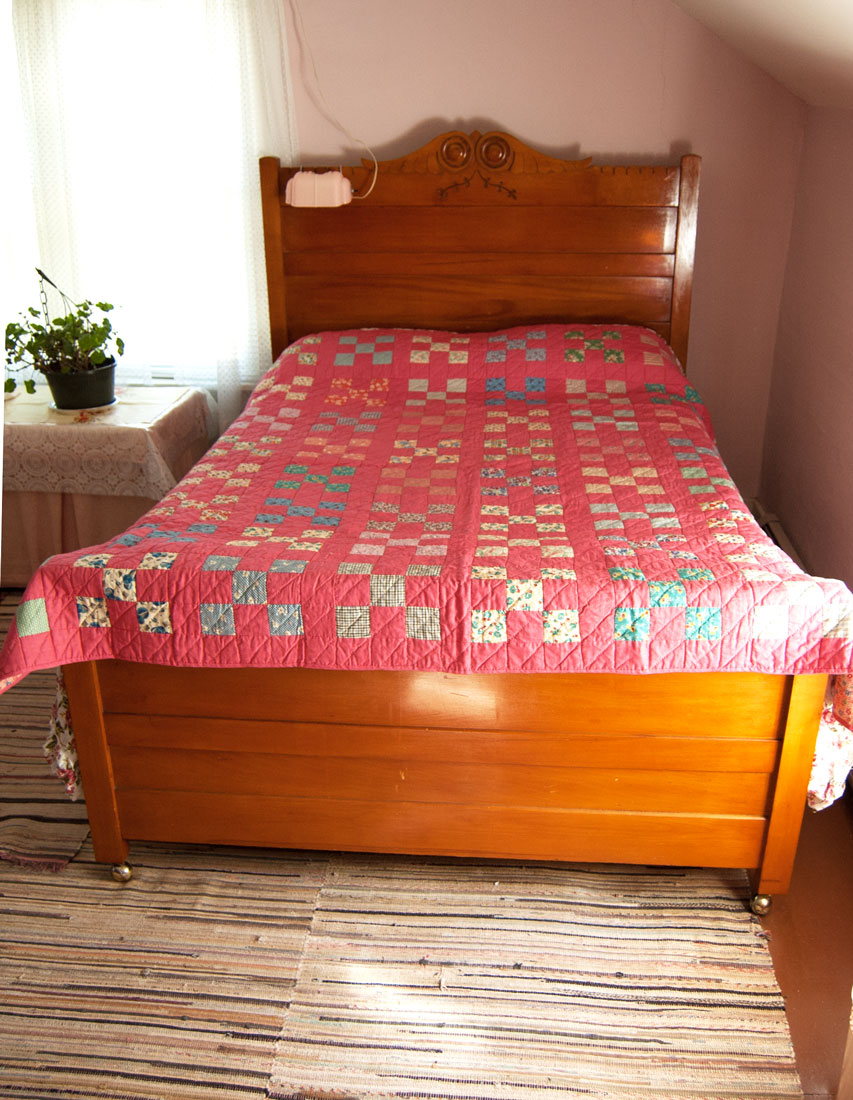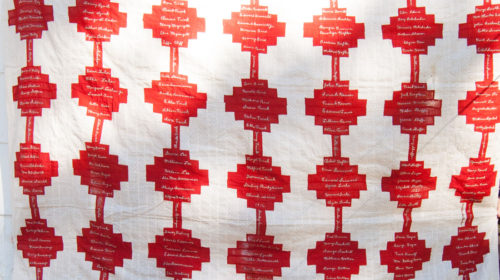In the mid-1840s a Congregational Meeting House was built in Jericho, a small settlement formerly called Howetown on the North-South Road near the village of Sterling. It was the third of three Presbyterian churches erected in the area by pioneer settlers who arrived there from Connecticut in the early 1800s. The Jericho meeting house was a small, plain, one-room building with no belfry or embellishments. The pews were straight-backed, and the only source of heat was a woodstove near the center of the room. It is not known if the church had a Ladies Aid, but when it was reorganized in 1871 as the Presbyterian Church of Jericho, a Ladies Aid Society was formed. Grace Frick was among its early members. Grace was also a quiltmaker, a skill she passed to her daughter and granddaughter. For many years Jericho Church had a flourishing Sunday School that numbered over 100 children.
In 1903 the Honesdale Citizen announced a chicken supper would be held at the church for the benefit of the Ladies Aid. Around 1915 the Ladies Aid, joined by members of the Sterling Ladies Aid, made a signature quilt to raise money for the two churches. They “sold” names for ten cents each. The quilt was designed in one of the many variations of the log cabin pattern. It has 56 red blocks with seven names embroidered in white on each block, for a total of 392 names. Blanche Stevens did the embroidery. The quilt top is dated 1916, but it was never finished into a quilt. The quilt top now resides in the collection of the Historians of Sterling Township.
In the early 1920s membership dwindled to only a handful and the church was closed. Aid members then went to the Sterling ME Church and quilted with their Ladies Aid. During those years the women often held quilting bees in the front parlor of the Iva Fitz home in Angels, where they were joined by neighbors Helen Cron and Mamie and Frieda Hause.
 | “I have a quilt my mother [Iva Frick Fitz] made in the 1930s, and my grandmother, Grace Frick, sewed some of the pieces. We had a Valentine’s snow and that’s when they started the quilt, the cutting and piecing. Most of the fabric came from our dresses and shirts. I used to be able to name where each piece came from, Grandma’s apron or my father’s shirt. My mother used the quilt, but I don’t. Once in a while I lay it out on the bed where I can enjoy it. I learned how to sew and quilt from my mother and grandmother. I’ve been quilting now for nearly 70 years.” —Frances Fitz Wreski (1921–2019) |
“I remember going to different houses with my mother, Helen Cron, when they had the quilting bees. We liked to play under the quilts when they were rolled out on the quilting frames.” — Phyllis Cron Jones
The church reorganized and opened in the 1950s as the Jericho Independent Church. They replaced the original box pews and dug out a basement for a new wood-burning furnace. William Henwood from Sterling served as the minister. Edna Fitz, a long-standing member of the Ladies Aid, played the organ during Sunday services. The church burned in November 1967 and was replaced with a new building on the same site.
